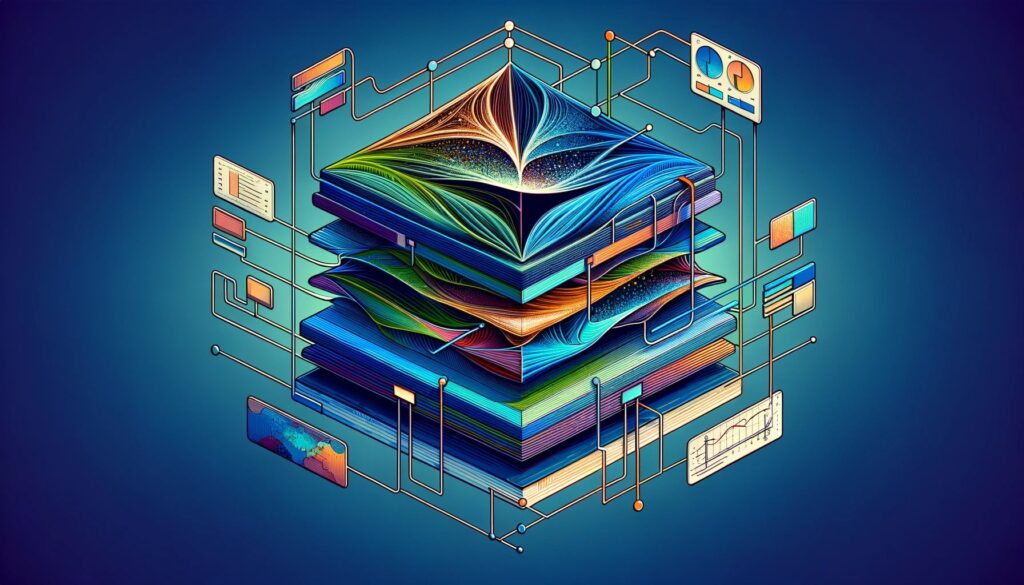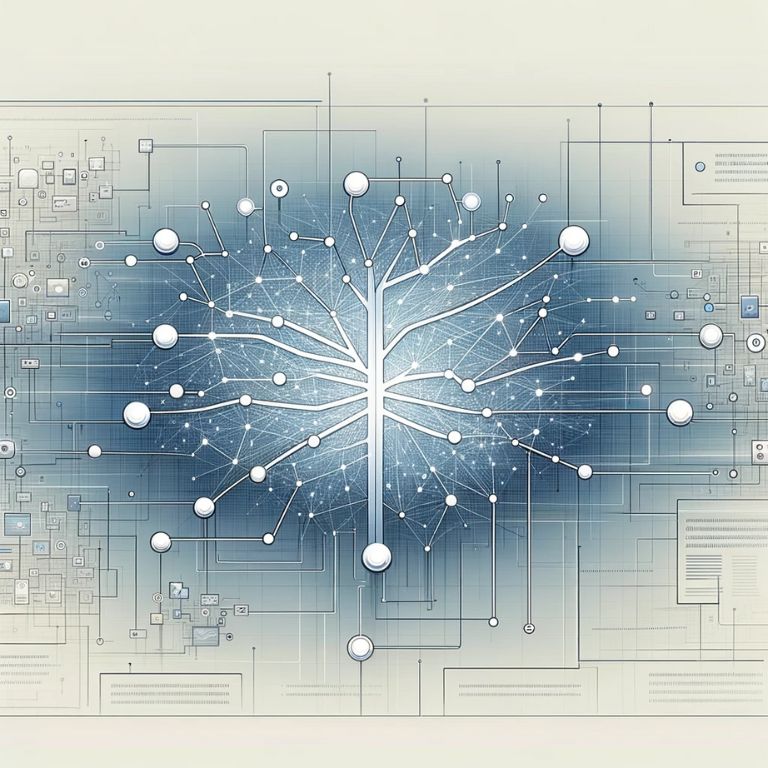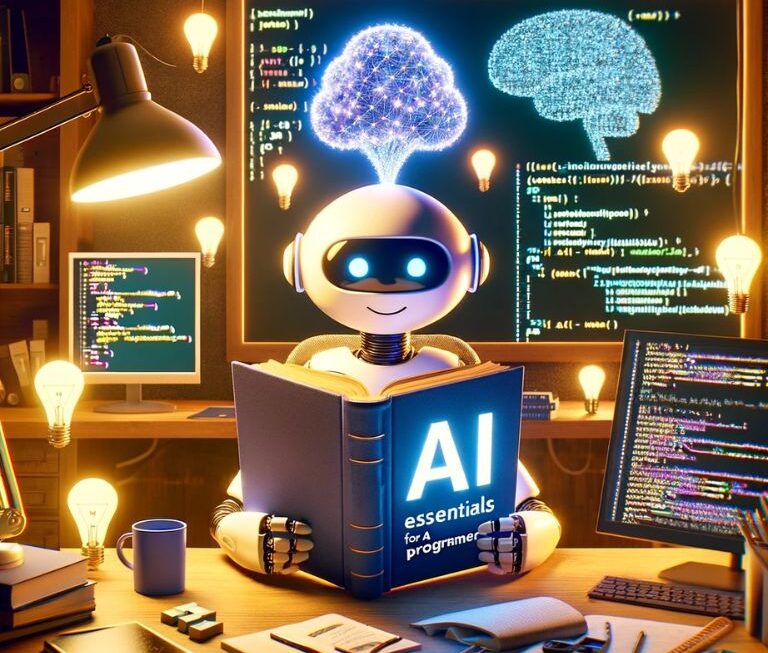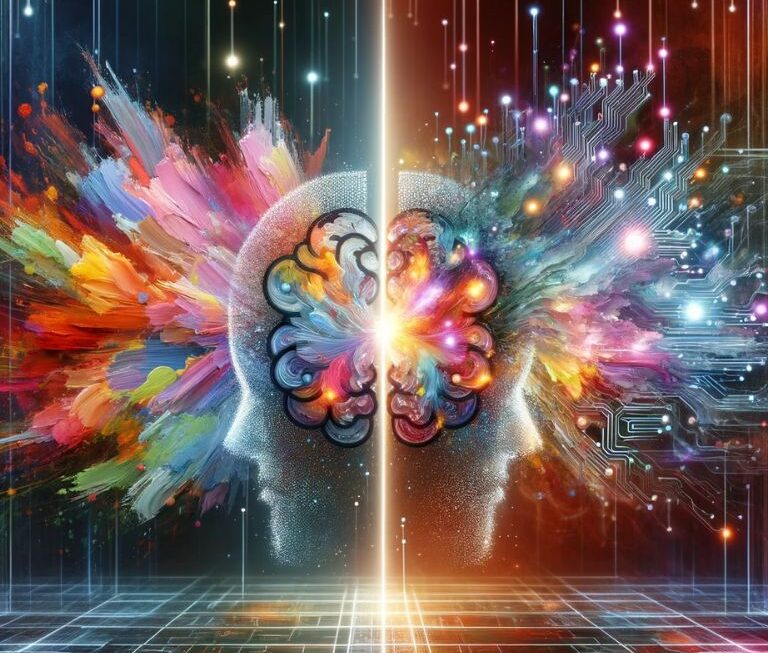Deep Belief Networks (DBNs) represent a significant milestone in the evolution of machine learning algorithms. Their ability to recognize, classify, and generate complex patterns makes them a cornerstone in the field of feature learning. This section provides an overview of DBNs, their historical context, and their basic principles and structure.
Overview of DBNs
Deep Belief Networks are a class of deep neural networks with multiple layers of latent variables or hidden units. They are known for their proficiency in unsupervised learning tasks, particularly in identifying and generating complex data patterns. DBNs are composed of multiple layers of stochastic, latent variables. The top two layers form an undirected graphical model, while the lower layers form a directed generative model.
Historical Context and Evolution
The concept of DBNs dates back to the early 2000s, a period marked by significant advancements in neural network research. They were introduced by Geoffrey Hinton and his colleagues as a solution to the challenges posed by traditional deep neural networks, particularly in training multi-layered architectures. DBNs offered an efficient way of pre-training deep neural networks layer-by-layer, leading to more effective and deeper models.
Basic Principles and Structure
The structure of a DBN is similar to that of a multi-layer perceptron, a type of feedforward neural network. However, DBNs differ significantly in their training methodology and the way they model data. A DBN is trained in two major phases: the pre-training phase and the fine-tuning phase. In the pre-training phase, each layer is trained as a Restricted Boltzmann Machine (RBM), which helps in initializing the weights and biases in a way that is close to the optimal solution. Once the pre-training is complete, the network undergoes fine-tuning using traditional backpropagation techniques.
| Layer | Function | Characteristics |
| Input Layer | Receives raw data | High-dimensional, observable data |
| Hidden Layers | Extracts features, learns representations | Multiple layers, each learning progressively complex features |
| Output Layer | Produces the final output based on learned features | Depends on the specific task (classification, regression, etc.) |
DBNs are particularly effective in scenarios where the data has a high dimensionality and complexity. Their layered architecture allows them to learn intricate patterns and features at different levels of abstraction, making them ideal for tasks such as image recognition, speech recognition, and even in the field of bioinformatics for drug discovery and genetic research.
Deep Belief Networks have revolutionized the approach to feature learning and extraction in complex datasets. Their unique structure and training methodology set them apart from other neural network models, paving the way for advancements in various fields of artificial intelligence and machine learning.
The Mechanics of DBNs in Feature Learning
The mechanics of Deep Belief Networks (DBNs) in feature learning are central to their effectiveness and wide application. This section delves into how DBNs learn and extract features, their comparison with other neural network models, and the pivotal role of unsupervised learning in DBNs.
How DBNs Learn and Extract Features
DBNs learn through a hierarchical process, where each layer of the network learns to represent the data in a way that simplifies the data for the next layer. This is achieved through a two-phase training process involving pre-training and fine-tuning, as outlined earlier.
During the pre-training phase, each layer is trained independently as a Restricted Boltzmann Machine (RBM). An RBM is a two-layer neural network where connections between the units are undirected and there are no connections within a layer. This phase allows the network to learn a set of features from the input data in an unsupervised manner.
In the fine-tuning phase, the entire network is treated as a standard feed-forward neural network, and backpropagation is applied to adjust the weights, minimizing the error in prediction. This phase often involves supervised learning, where the network is fine-tuned for a specific task such as classification or regression.
Comparison with Other Neural Network Models
DBNs differ from other neural networks, particularly in their architecture and training method. The table below highlights key differences between DBNs and other common neural network models:
Comparison of DBNs with Other Neural Network Models
- Training Method
- DBNs: Two-phase (pre-training with RBMs, followed by backpropagation)
- Other Neural Networks: Typically trained using backpropagation from the start
- Layer Connectivity
- DBNs: RBM-based layers (undirected connections)
- Other Neural Networks: Directed connections
- Learning Type
- DBNs: Both unsupervised (in pre-training) and supervised (in fine-tuning)
- Other Neural Networks: Primarily supervised learning
- Feature Extraction
- DBNs: Hierarchical, layer-by-layer
- Other Neural Networks: Depends on network type, often not hierarchical
This list format presents the comparison between Deep Belief Networks (DBNs) and other neural network models in a clear and structured manner, focusing on key aspects such as training method, layer connectivity, learning type, and feature extraction.
The Role of Unsupervised Learning in DBNs

Unsupervised learning plays a critical role in the way DBNs function, particularly in the pre-training phase. This phase allows the network to capture the probabilistic distribution of the input data, making it highly effective in discovering intricate patterns and features without requiring labeled data. This capability is particularly beneficial in areas where labeled data is scarce or expensive to obtain.
The combination of unsupervised pre-training and supervised fine-tuning makes DBNs extremely versatile and powerful for feature learning. They can capture the underlying structure of the data, leading to more efficient learning when it comes to specific tasks during the fine-tuning phase.
The mechanics of DBNs in feature learning set them apart from traditional neural network models. Their unique training methodology, combined with the capability of hierarchical feature extraction through unsupervised learning, makes them a powerful tool in machine learning, particularly in tasks that involve complex and high-dimensional data.
Applications of DBNs in Complex Pattern Recognition
Deep Belief Networks (DBNs) have been instrumental in advancing the field of complex pattern recognition. This section explores the real-world examples of DBNs in action and their advantages over traditional methods in various applications.
Real-World Examples of DBNs in Action
DBNs have found extensive applications in various fields due to their exceptional ability to learn from and interpret complex data sets. Some of the notable applications include:
- Image Recognition: DBNs are adept at recognizing patterns and nuances in images, making them valuable in facial recognition systems, medical image analysis, and automated image classification.
- Speech Recognition: In the realm of speech recognition, DBNs are used to understand and interpret different speech patterns. They are particularly effective in noisy environments where traditional models struggle.
- Bioinformatics: DBNs have proven to be a powerful tool in the analysis of biological data, such as genetic sequencing and protein structure prediction. Their ability to identify patterns in complex biological data is unparalleled.
- Financial Modeling: In the financial sector, DBNs are used for predicting market trends and risks by analyzing vast amounts of financial data, helping in making informed investment decisions.
Advantages of DBNs over Traditional Methods
DBNs offer several advantages over traditional pattern recognition methods:
- Ability to Handle High-Dimensional Data: DBNs can efficiently process and learn from high-dimensional data, which is a significant challenge for traditional models.
- Robustness to Noise: The hierarchical structure of DBNs makes them more robust to noise and variations in the input data.
- Unsupervised Feature Learning: DBNs can learn features without the need for labeled data, a significant advantage in fields where labeled data is scarce or expensive.
- Flexibility: DBNs are highly adaptable to various types of data and can be integrated with other machine learning techniques for enhanced performance.
Advantages of DBNs in Various Applications
- Image Recognition
- Advantages of Using DBNs: Superior pattern recognition, noise robustness.
- Speech Recognition
- Advantages of Using DBNs: Effective in varied and noisy environments.
- Bioinformatics
- Advantages of Using DBNs: Ability to uncover complex biological patterns.
- Financial Modeling
- Advantages of Using DBNs: Efficient in analyzing high-dimensional financial data.
This list format clearly delineates the advantages of using Deep Belief Networks (DBNs) in various application areas, highlighting their strengths in each domain.
Deep Belief Networks have significantly contributed to the field of complex pattern recognition, offering solutions where traditional methods fall short. Their flexibility, robustness, and ability to learn from high-dimensional data make them an invaluable tool in various real-world applications.
Challenges and Limitations of DBNs
Despite their many advantages, Deep Belief Networks (DBNs) also face several challenges and limitations, particularly in their implementation and application. This section explores these challenges, their implications, and potential ways to overcome them.
Technical and Computational Hurdles
One of the primary challenges in working with DBNs is the computational complexity involved in training them. Due to their deep and layered structure, DBNs require significant computational resources, particularly in terms of memory and processing power. This can be a limiting factor, especially when working with very large datasets or in real-time applications.
- Large Datasets: Training DBNs on large datasets can be time-consuming and resource-intensive.
- Real-time Processing: The computational demands of DBNs can make them less suitable for applications requiring real-time processing.
Limitations in Certain Types of Data or Tasks
While DBNs excel at learning features from high-dimensional data, they have certain limitations when it comes to specific types of data or tasks.
- Structured Data: DBNs might not be as effective with structured data as with unstructured data like images or speech.
- Simplicity vs. Complexity: In some cases, simpler models may outperform DBNs, especially in tasks where the complexity of DBNs does not provide a significant advantage.
Overcoming These Challenges
There are several approaches to mitigating the challenges faced by DBNs:
- Optimizing Training Algorithms: Developing more efficient training algorithms can reduce the computational burden.
- Hybrid Models: Combining DBNs with other models can leverage the strengths of each, particularly in handling different types of data.
- Hardware Advancements: Utilizing advanced hardware, like GPUs and specialized neural network processors, can alleviate computational constraints.
Challenges and Solutions for DBNs
- Challenge: Computational Complexity
- Solution: Optimization of algorithms, use of advanced hardware.
- Challenge: Handling Structured Data
- Solution: Implementation of hybrid models with suitable algorithms.
- Challenge: Resource-Intensive Training
- Solution: Employment of efficient training techniques, leveraging cloud computing resources.
This list format succinctly presents the challenges faced by Deep Belief Networks (DBNs) along with their respective solutions, providing a clear understanding of how these challenges can be addressed.
Integrating DBNs with Other Machine Learning Techniques
The integration of Deep Belief Networks (DBNs) with other machine learning techniques is a crucial area of exploration that enhances the applicability and effectiveness of these models. This section delves into the synergy between DBNs and various machine learning methods, and the advantages of hybrid models.
Synergy with Supervised and Unsupervised Learning Methods

DBNs, with their unique structure and training approach, can be effectively combined with both supervised and unsupervised learning methods. This integration allows for the leveraging of strengths from different approaches, leading to more robust and accurate models.
- Supervised Learning Integration: When combined with supervised learning algorithms, DBNs can be fine-tuned to achieve high performance in specific tasks, such as classification or regression. This integration is particularly beneficial in scenarios where a large amount of labeled data is available.
- Unsupervised Learning Integration: DBNs can also be integrated with unsupervised learning techniques to discover hidden patterns in data. This is especially useful in exploratory data analysis and situations where labeled data is scarce.
Hybrid Models and Their Advantages
Hybrid models that combine DBNs with other machine learning algorithms can address some of the limitations of using DBNs alone. These hybrid models can take various forms, depending on the requirements of the specific application.
- DBNs with Convolutional Neural Networks (CNNs): For image processing tasks, integrating DBNs with CNNs can enhance feature extraction capabilities.
- DBNs with Recurrent Neural Networks (RNNs): In sequence modeling tasks, such as time-series analysis or natural language processing, combining DBNs with RNNs can improve the model’s ability to understand temporal dynamics.
- DBNs with Reinforcement Learning: In adaptive systems, such as robotics or game playing, the integration of DBNs with reinforcement learning techniques can enhance decision-making processes.
| Hybrid Model | Advantages |
| DBNs with CNNs | Enhanced image feature extraction |
| DBNs with RNNs | Improved handling of sequential data |
| DBNs with Reinforcement Learning | Better decision-making in adaptive systems |
Integrating Deep Belief Networks with other machine learning techniques opens up a plethora of possibilities, enhancing their applicability and effectiveness across a wide range of domains. These hybrid models not only leverage the strengths of each approach but also mitigate some of the inherent limitations of using DBNs in isolation, leading to more versatile and powerful machine learning solutions.
Future of DBNs in Feature Learning and Beyond
The future of Deep Belief Networks (DBNs) in feature learning and the broader field of artificial intelligence is a subject of great interest and potential. This section explores emerging trends, potential developments, and the future scope of DBNs in AI and machine learning.
Emerging Trends and Potential Developments
The continuous evolution in the field of machine learning and artificial intelligence promises several exciting developments for DBNs:
- Advancements in Training Algorithms: Future advancements in training algorithms could make DBNs more efficient, reducing the computational resources required and enabling their application in a wider range of fields.
- Integration with Cutting-Edge Technologies: The integration of DBNs with technologies like quantum computing and neuromorphic hardware could lead to unprecedented processing capabilities and efficiencies.
- Improved Performance in Complex Tasks: Enhanced versions of DBNs may offer even greater accuracy and performance in complex tasks such as natural language processing, predictive analytics, and autonomous systems.
The Future Scope of DBNs in AI and Machine Learning
The potential applications and impact of DBNs in the future are vast and varied:
- Personalized Medicine: In the healthcare sector, DBNs could play a crucial role in personalized medicine, aiding in the analysis of complex genetic data to tailor treatments to individual patients.
- Advanced Robotics: DBNs could contribute significantly to the development of advanced robotics, enabling more sophisticated and adaptive behavior in robots.
- Smart Cities and IoT: In the realm of smart cities and the Internet of Things (IoT), DBNs could be pivotal in analyzing the massive amounts of data generated, leading to more efficient and intelligent urban systems.
Future Potential of DBNs in Various Domains
- Domain: Healthcare
- Potential Impact of DBNs: Personalized treatment plans, advanced diagnostics.
- Domain: Robotics
- Potential Impact of DBNs: Enhanced adaptive behavior and decision-making.
- Domain: Smart Cities & IoT
- Potential Impact of DBNs: Efficient data analysis for intelligent urban systems.
This list format effectively highlights the potential impact of Deep Belief Networks (DBNs) in various domains, showcasing their future applications and contributions to these fields.
The future of Deep Belief Networks in feature learning and beyond is promising and multifaceted. As the field of artificial intelligence continues to advance, DBNs are poised to play a significant role in shaping the technological landscape, driving innovations, and transforming various industries.
The Transformative Impact of DBNs
Deep Belief Networks (DBNs) have marked a significant milestone in the field of machine learning and artificial intelligence. Characterized by their unique structure and sophisticated training methods, DBNs have excelled in complex tasks involving high-dimensional data, such as image and speech recognition, and bioinformatics. Their ability to hierarchically learn and integrate with other machine learning techniques has not only expanded the boundaries of AI capabilities but also opened new horizons in both research and practical applications. This transformative impact is evident across various industries, where DBNs contribute to advancements in technology and knowledge.
Looking ahead, the role of DBNs in shaping the future of AI is both promising and vast. As advancements in computational power and algorithmic efficiency continue, the potential applications of DBNs are expected to grow exponentially. This evolution will likely see DBNs becoming more efficient, versatile, and integral to solving complex challenges across different sectors. Their future in AI is not just about enhancing existing technologies but also about driving innovative solutions that could revolutionize how we interact with and benefit from artificial intelligence.




